Mid-Ashes report card: How the various facets of Australia’s game fared so far this series
With only one score over 50 in his last 16 innings, Marnus Labuschagne is in the worst form of his Test career. What’s going wrong? Check out DANIEL CHERNY mid-series Ashes report card here.

Cricket
Don't miss out on the headlines from Cricket. Followed categories will be added to My News.
School’s out so to speak for the Aussies who continue their European breather before reconvening for the final push towards winning an Ashes series on English soil for the first time in 22 years.
Australia has played four Tests since arriving in the UK in late May, winning the World Test Championship final against India and holding a 2-1 lead over England despite losing the most recent rubber at Headingley.
It shows that plenty has been working for Australia, but not everything. Here are some appraisals of how various components of the Aussies’ game are tracking.
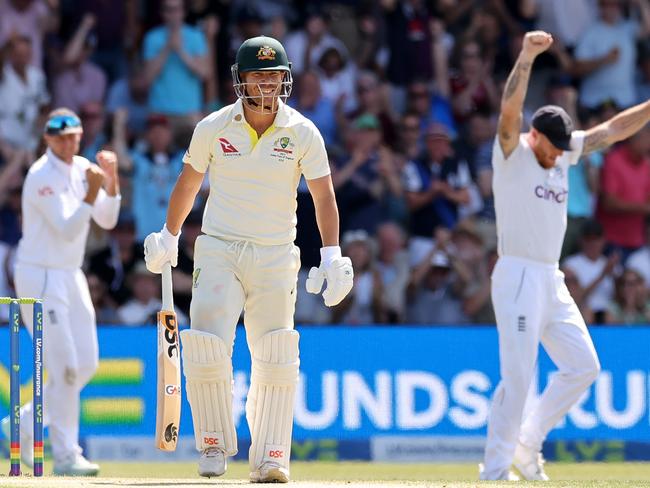
TOP ORDER BATTING
No disaster by any stretch, but not firing on all cylinders either. Given the huge struggles of David Warner, Cameron Bancroft and Marcus Harris in the opening positions four years ago, the bar for improvement was pretty low, and has clearly been realised. That Usman Khawaja has faced almost 1000 balls on tour has made a huge difference, with the veteran – dropped midway through the 2019 series – continuing his extraordinary renaissance. It’s been feast or famine for Steve Smith, but two centuries in four Tests is a more than acceptable strike rate, albeit some of his dismissals have been head-scratching. Warner and Marnus Labuschagne have been the biggest concerns. The former has played more aggressively than he did last time around and it’s brought him some relative success, but twin failures at Headingley – falling twice to long-time tormentor Stuart Broad – has brought his spot sharply into focus again. Labuschagne keeps getting starts and after twice falling fishing outside off at Edgbaston has managed to consolidate his game. But it’s now 16 Test innings with just one score over 50 for Australia’s No. 3, who still has just one Test ton overseas. Grade: B
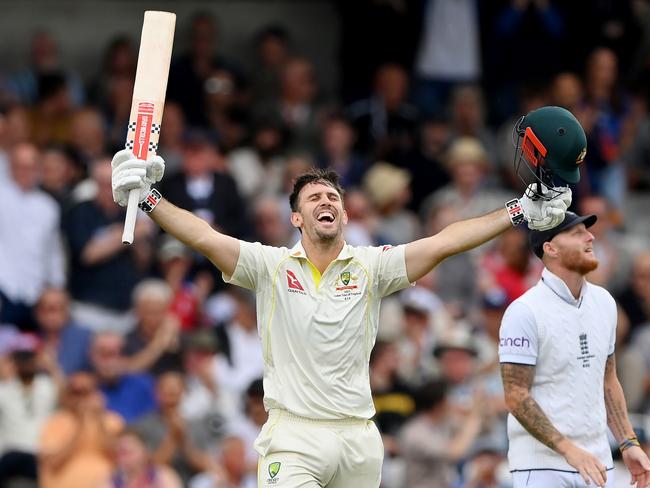
MIDDLE ORDER BATTING
The ICC’s latest world player rankings revealed that Travis Head is now behind only New Zealand’s injured star Kane Williamson for Test batting. That is a remarkable rise for a player who missed out on a central contract just two years ago and was dropped as recently as February. Head has been Australia’s best batter on this tour, fighting Bazball fire with fire and withstanding England’s plans to expose a perceived weakness against the short-ball. There is only one Adam Gilchrist but there’s a hell of a lot of Gilly about the South Australian’s counterattacking game. Before his injury, Cameron Green was unable to reach any great heights with the bat, making a few handy contributions but tending to get bogged down. Alex Carey missed out in Leeds after a tough week but has generally been a strong performer at No 7, while Mitch Marsh’s dashing century on return last week will force selectors into a tough call. Grade: A
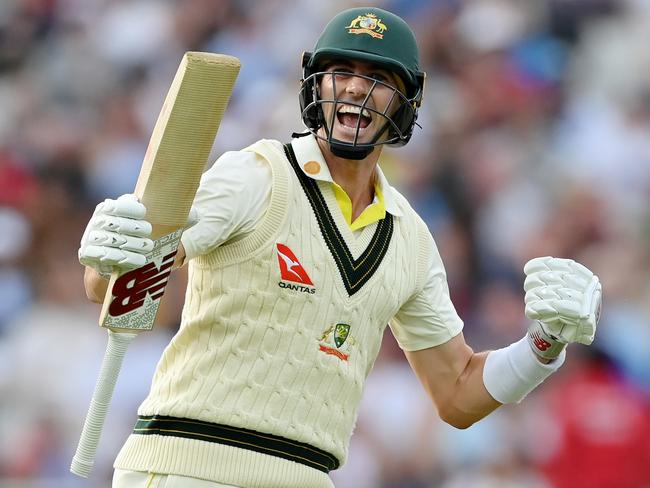
LOWER ORDER BATTING
Australia’s tail barely a got a look-in over the home summer against weak South African and West Indies side but was found out in India earlier this year. There were understandable concerns about the Aussies’ long tail heading into the Ashes opener in Birmingham, especially in the absence of Mitchell Starc, but Pat Cummins summoned something special, combining with Nathan Lyon to steer the tourists home against the odds. That was always going to be hard to top, and returns since have been modest, particularly the collapse of 6-23 in the first innings at Leeds. Still Australia’s tail doesn’t contribute again for the rest of the tour, it will have already done its job by stealing the first rubber. Grade: A

PACE BOWLING
On paper this is Australia’s biggest strength, and the fact that at various points on this tour Mitchell Starc and Scott Boland have been left out of the XI points to the class of the Aussie artillery. England’s up-tempo approach was always going to provide some fresh challenges, and there have been times when the hosts have got away from the Aussie quicks. None has been flawless, but overall it’s been a solid job on largely unhelpful conditions. Cummins has been the mainstay, delivering some exceptional and timely spells across all three Ashes Tests, while Starc has silenced those who said he wasn’t up to it in English conditions. Boland has been the biggest disappointment, especially after an exceptional WTC final showing, with England upsetting his rhythm by batting out of the crease. Josh Hazlewood was the pick of the quicks on day one in Birmgingham and managed to finally end Ben Stokes’ resistance at Lord’s. Marsh outbowled Green albeit helped by a friendlier pitch in Leeds. Grade: B
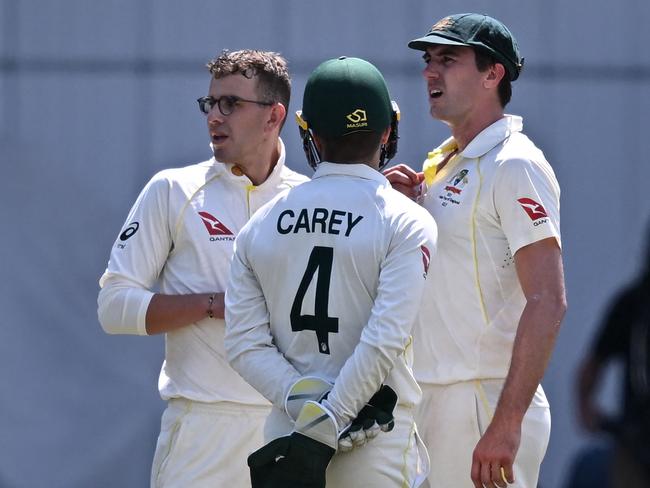
SPIN BOWLING
Nathan Lyon tidied up India on the final day at The Oval and then braced for a Bazball onslaught in Birmingham. He was always going to cop it a bit but an eight-wicket haul showed his class. He picked up an early wicket at Lord’s before suffering the calf injury that threatened to turn the series on its head. Travis Head did a good job chipping in for the rest of the match but a lack of turn in the wicket and perhaps a lack of faith in Todd Murphy led to the youngster bowling less than 10 overs in Leeds, where he was a touch loose but also created chances. If he plays again it’s hard to imagine England won’t go even harder next time. Grade: B
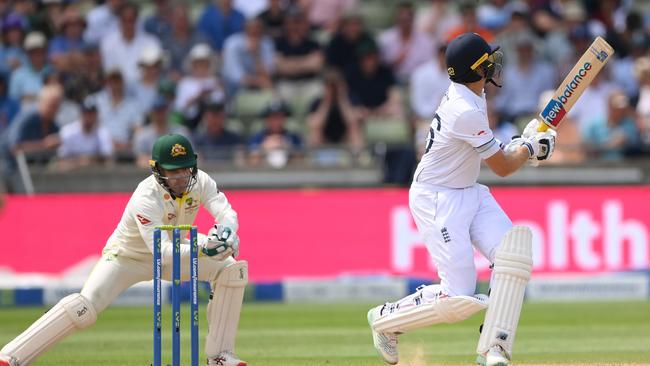
FIELDING
England hasn’t put up much opposition on this front, but the Aussies have clearly been the better side in the field, and it has arguably been the biggest difference between the two teams. The starkest difference is that Australia is playing with a competent wicketkeeper in Carey, who showed his adaptability with some nifty stumpings to punish England’s dancing approach early in the series. That said, the Aussies have spilt a few catches too, gifting Stokes multiple lives at both Lord’s and Headingley. Grade: B+
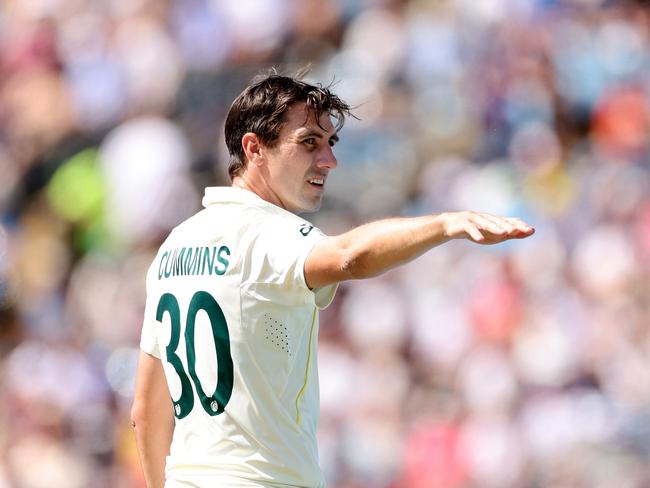
TACTICS
This is probably the hardest area to judge, because we will never know how Australia might have fared had Cummins captained the side differently. Overall he has led conservatively, a hallmark of his captaincy across more than 18 months, happy to spread the field from the outset and try to wait for an error rather than force the issue. It has not been the most popular move and the short-ball approach to England’s tail is questionable. The Aussies are also still clearly searching for a way to stop Stokes’ rearguards. However if the ends justify the means, then it is difficult to be overly critical of the way Cummins has approached his fields, especially given he has lost three tosses and not been consistently assisted by pitches or weather. Grade: B+
Originally published as Mid-Ashes report card: How the various facets of Australia’s game fared so far this series



